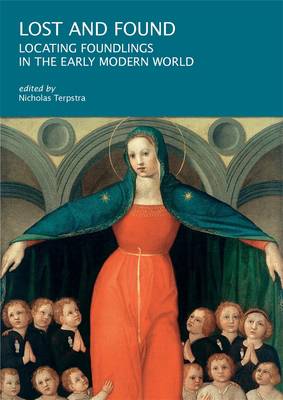
Je cadeautjes zeker op tijd in huis hebben voor de feestdagen? Kom langs in onze winkels en vind het perfecte geschenk!
- Afhalen na 1 uur in een winkel met voorraad
- Gratis thuislevering in België vanaf € 30
- Ruim aanbod met 7 miljoen producten
Je cadeautjes zeker op tijd in huis hebben voor de feestdagen? Kom langs in onze winkels en vind het perfecte geschenk!
- Afhalen na 1 uur in een winkel met voorraad
- Gratis thuislevering in België vanaf € 30
- Ruim aanbod met 7 miljoen producten
Zoeken
€ 58,45
+ 116 punten
Omschrijving
Florence's foundling home of the Innocenti is often taken as a symbol of Renaissance creativity, innovation, and humanity. Its progressive approach to caring for abandoned children was matched by the iconic architectural form designed one of the period's leading architects, Filippo Brunelleschi. Did reality match the reputation? The essays in Lost and Found explore new dimensions and contexts for foundling care at the Innocenti and use archival documents and digital tools to locate it architecturally, geographically, and socially. They ask questions that reframe the Ospedale degli Innocenti in different contexts and open paths for further research: Was Brunelleschi's design a failure? How can digital tools recover the Innocenti's lost spaces and extensive real estate holdings? What did the law say about foundlings and abandonment? What was it like to live in the Innocenti and in homes elsewhere? What roles did race and enslavement play in infant abandonment?
Specificaties
Betrokkenen
- Uitgeverij:
Inhoud
- Aantal bladzijden:
- 384
- Taal:
- Engels
- Reeks:
Eigenschappen
- Productcode (EAN):
- 9780674296169
- Verschijningsdatum:
- 13/02/2024
- Uitvoering:
- Paperback
- Formaat:
- Trade paperback (VS)
- Afmetingen:
- 171 mm x 241 mm
- Gewicht:
- 997 g

Alleen bij Standaard Boekhandel
+ 116 punten op je klantenkaart van Standaard Boekhandel
Beoordelingen
We publiceren alleen reviews die voldoen aan de voorwaarden voor reviews. Bekijk onze voorwaarden voor reviews.








